Why The Seasons Matter To Your Health

In New York, the seasons tend to change in an instant. One day it is Autumn, and the very next day, it is Winter.
When I lived in San Diego, I did notice the seasons changing, but the differences were far more subtle. It felt like an eternal summer for someone like me who had grown up in the rain and wind-swept west coast of Ireland.
Regardless of how quickly they change, there are always seasons.
But are there seasons for things like blood pressure, heart rate, cortisol levels, and even heart attacks?
The answer is yes.
Blood Pressure
High blood pressure is the risk factor associated with the greatest number of deaths worldwide1.
What most people do not realise is that it has a seasonal ebb and flow2.
During winter months, average daytime and particularly morning blood pressures tend to be higher.
During summer months, average nighttime blood pressures are often higher.
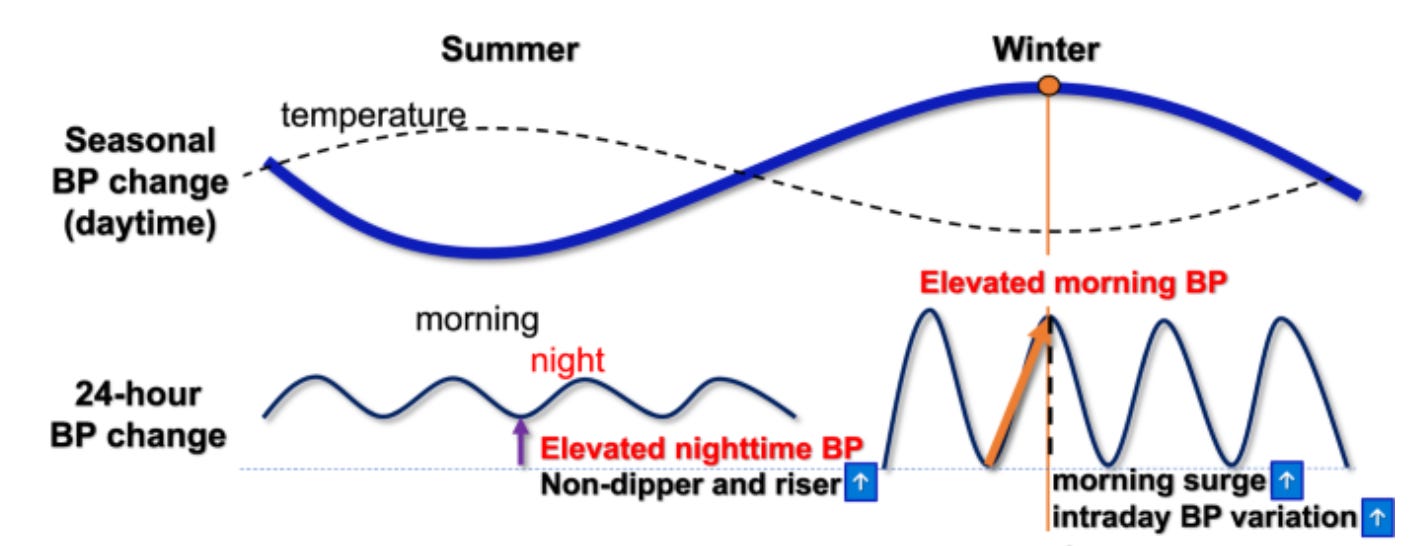
The factor that appears to link these phenomena is temperature.
Lower temperatures during winter months appear to elevate daytime blood pressure. Elevated summer nighttime blood pressures appear to be less of a direct consequence of higher temperatures but a more indirect consequence of reduced sleep quality because of the higher temperatures.
The impact of temperature is something that is experienced by all age groups, but just not equally.
The average 30-year-old male or female can experience an increase of 4-5mmHg of systolic (Top Number) blood pressure when temperatures drop by 10°C.
For the average 80-year-old, however, that same temperature change can increase daytime blood pressure by about 10mmHg.
A change of this magnitude has the potential to be of significant consequence in terms of heart attack and stroke risk3.

Heart Rate
There is a clear relationship between resting heart rate and the likelihood of dying from both any cause (All-Cause Mortality) and also from cardiovascular disease4.

The impact of a higher resting heart rate is small when the resting heart rate is below 75 beats per minute but starts to rise steeply above 75 beats per minute.
Both male and female resting heart rates tend to rise and fall with the seasons, with the average resting heart rate being higher in the winter months of December and January.
The difference, however, is small, and when viewed in the context of the mortality graph shown above, it is unlikely to have major clinical consequences5.
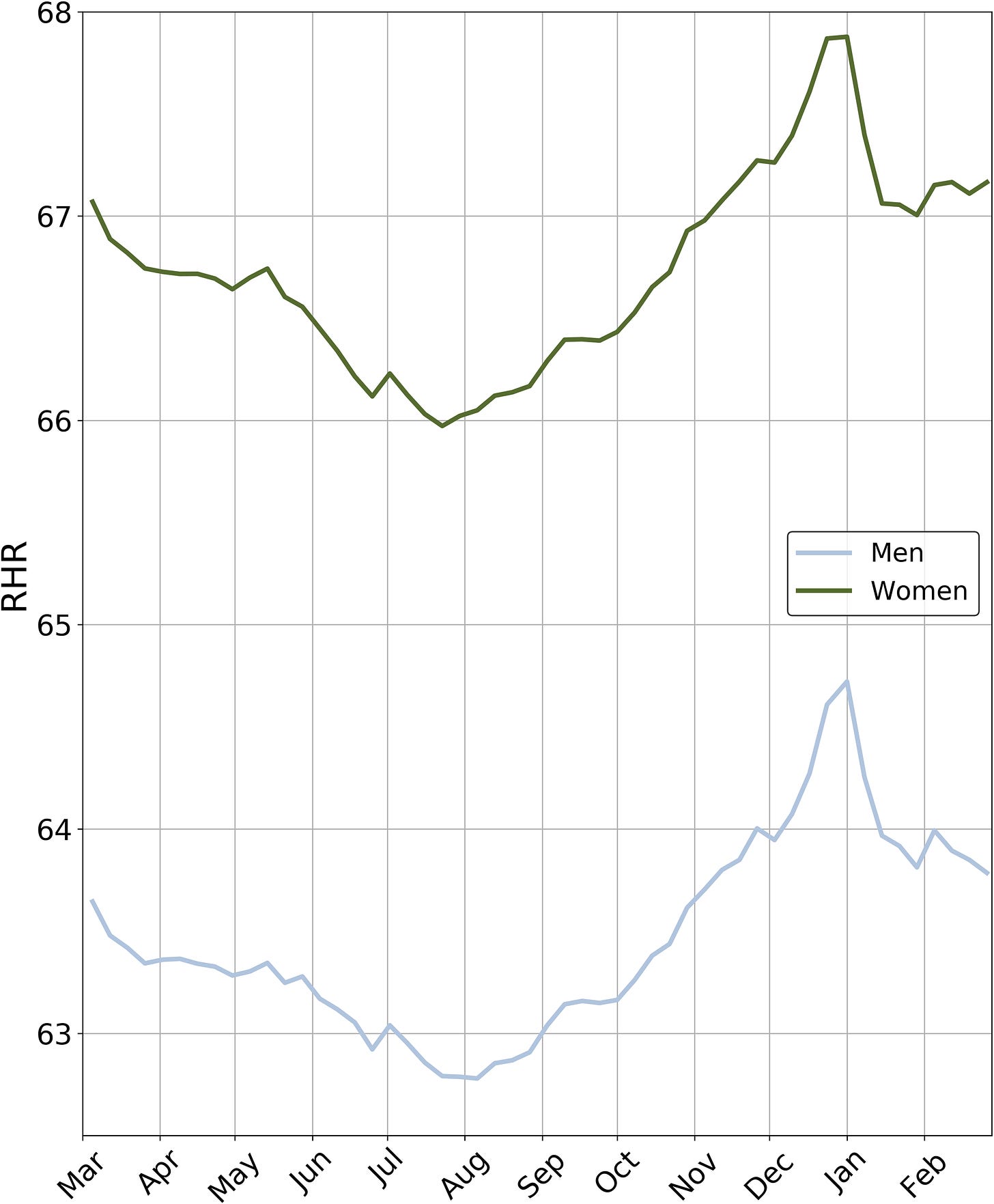
Cortisol & Stress
Summer months just seem less stressful. But in all honesty, that could be for any number of reasons, from better weather, a greater likelihood of being on holiday and the higher likelihood of being outdoors in nature.
Cortisol is a hormone produced by your adrenal glands at higher levels during periods of stress.
Measuring cortisol can give a rough estimate of the amount of stress someone is experiencing and whether this changes throughout the year.
Cortisol levels are higher on average during winter months compared to summer months, but similar to heart rate, the differences are quite small6.

Walking
Broadly, the more steps you take, the longer you live7.
But again, the question arises. Do we take fewer steps during the winter months, and if so, is it likely to matter?
As you would expect, we tend to walk less during winter months to the order of approximately 1000 steps per day8.
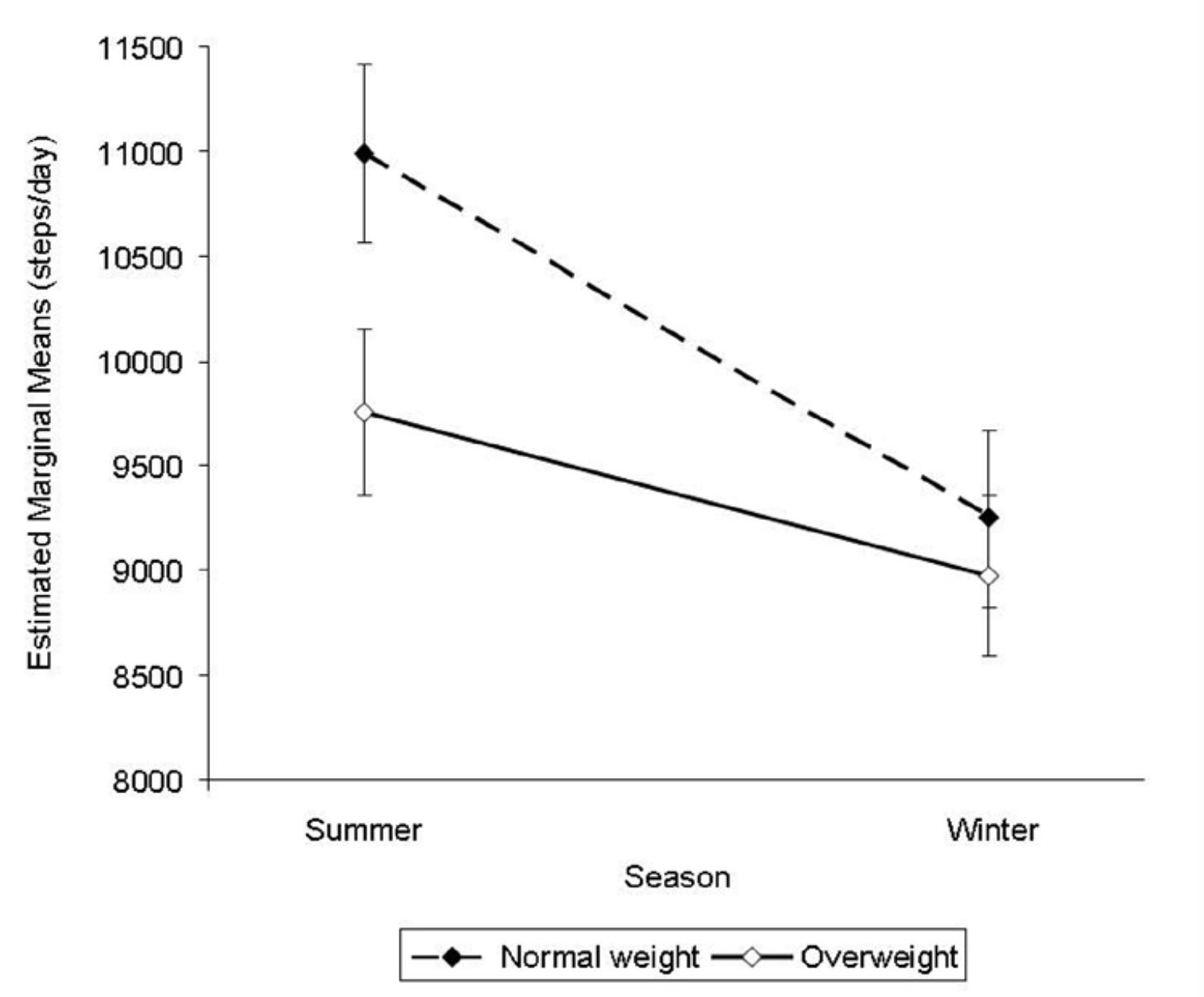
Interestingly, this metric tends to track closely with temperature variations with reductions in step counts during both periods of very low temperature and high temperature9.
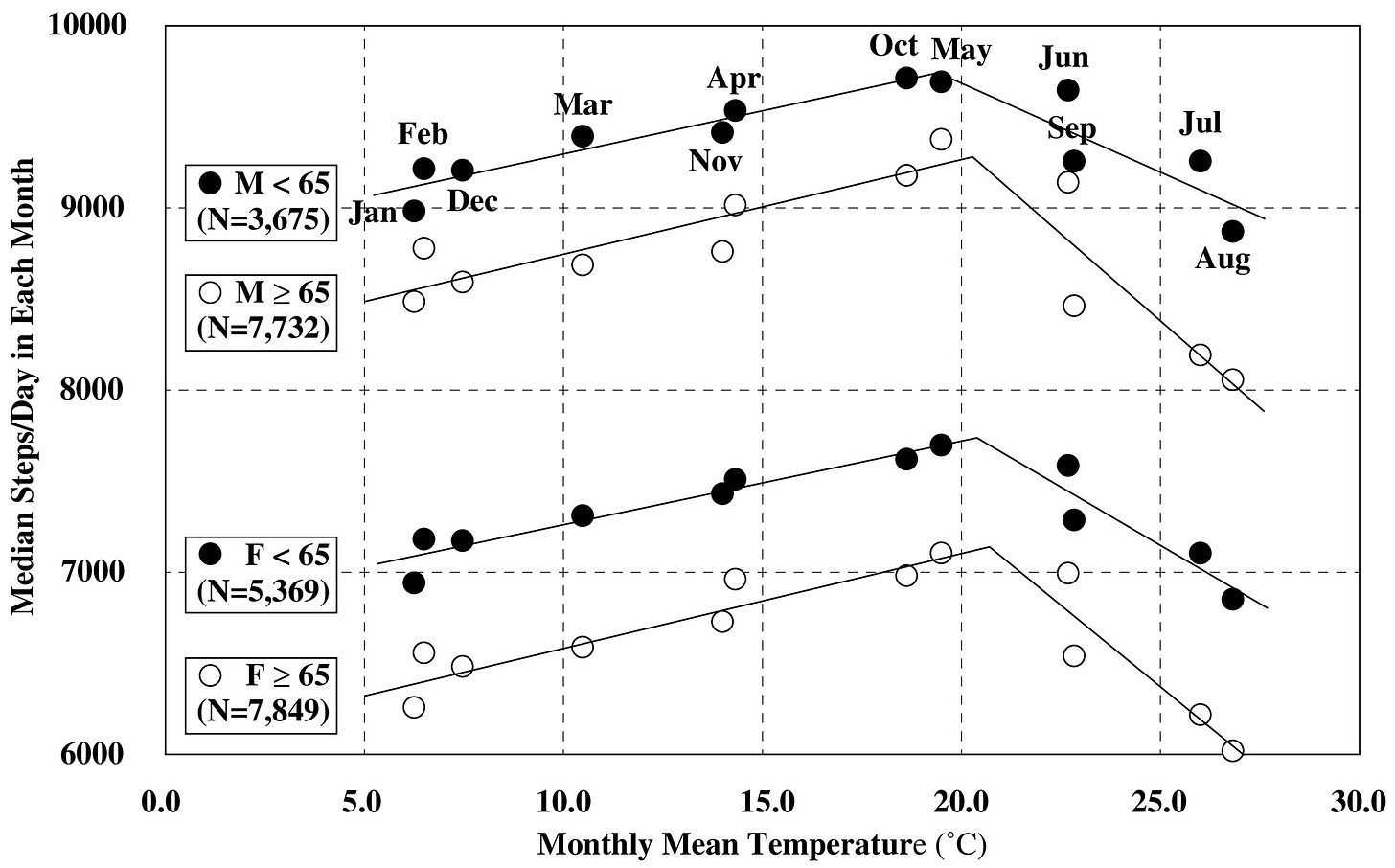
Walking speed and cadence all track with the seasons and temperature changes10.
Heart Attacks
The question then becomes, do these health metrics, such as blood pressure, heart rate and step count etc., account for a higher number of heart attacks during winter months?
The answer is yes. Kind of. It depends.
When assessing this question in a Spanish population, the pattern is clear. Winter months are associated with more hearts, and summer months are associated with fewer heart attacks11.
What you would expect.
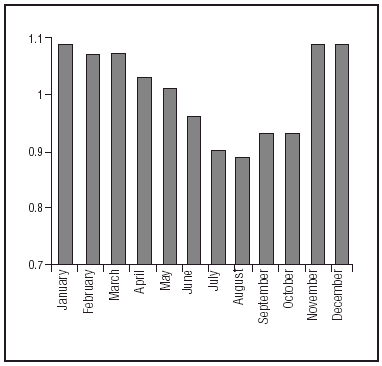
However, when different populations are evaluated, such as Chinese populations, the seasonal difference tends to fade. The differences in these populations are likely to be driven by the specific weather patterns and temperature ranges during the year.
Winter in New York is very different to winter in San Diego.
And this is likely to make a difference.
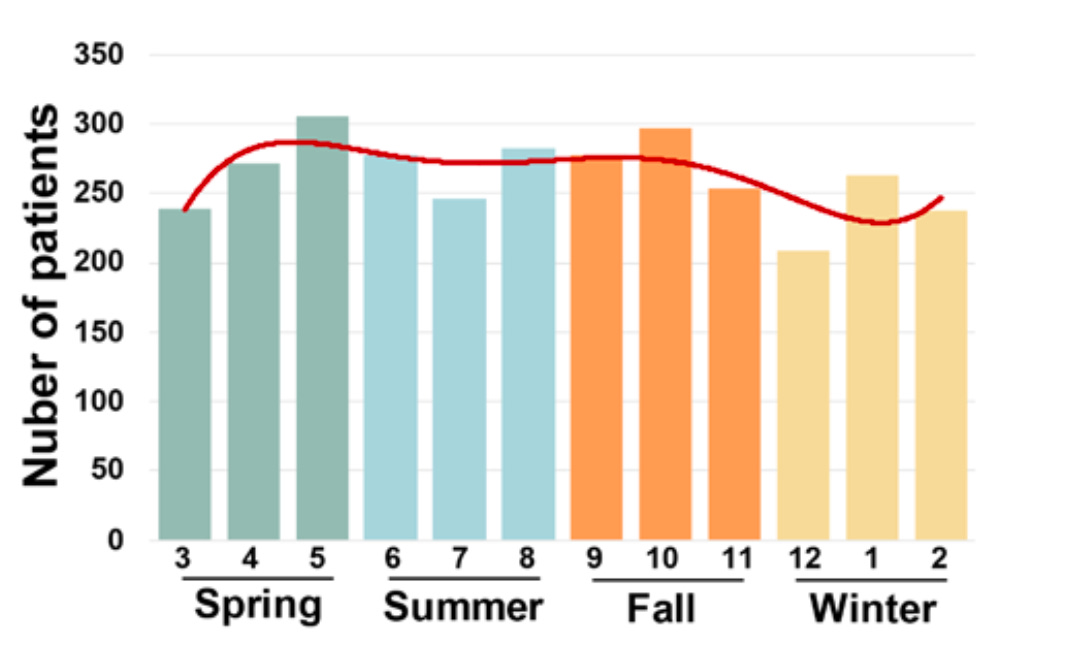
The list of factors that fluctuate on a seasonal basis is long.
Some of these are likely to influence clinical risk.
Some are less likely to influence risk.
But there are seasons.
It’s just important to think about how they might impact you individually based on your risk, your physiology and your geography.
Take me back to Southern California, I say!
https://ourworldindata.org/causes-of-death
Seasonal variation in blood pressure: current evidence and recommendations for hypertension management. Hypertens Res 44, 1363–1372 (2021).
Seasonal variation in blood pressure: current evidence and recommendations for hypertension management. Hypertens Res 44, 1363–1372 (2021).
Resting heart rate and all-cause and cardiovascular mortality in the general population: a meta-analysis. CMAJ. 2016 Feb 16;188(3):E53-E63.
Inter- and intraindividual variability in daily resting heart rate and its associations with age, sex, sleep, BMI, and time of year: Retrospective, longitudinal cohort study of 92,457 adults. PLoS One. 2020 Feb 5;15(2):e0227709.
Seasonal variation in human salivary cortisol concentration. Chronobiol Int. 2008 Nov;25(6):923-37.
Steps per Day and All-Cause Mortality in Middle-aged Adults in the Coronary Artery Risk Development in Young Adults Study. JAMA Netw Open. 2021 Sep 1;4(9):e2124516.
Summer to winter variability in the step counts of normal weight and overweight adults living in the UK. J Phys Act Health. 2011 Jan;8(1):36-44.
Associations between seasonal meteorological conditions and the daily step count of adults in Yokohama, Japan: Results of year-round pedometer measurements in a large population. Prev Med Rep. 2017 Aug 5;8:15-17.
Walking is regulated by environmental temperature. Sci Rep. 2021 Jun 9;11(1):12136.
Variaciones estacionales en los ingresos por infarto agudo de micardio. El estudio PRIMVAC [Seasonal variations in admissions for acute myocardial infarction. The PRIMVAC study]. Rev Esp Cardiol. 2004 Jan;57(1):12-9. Spanish.




